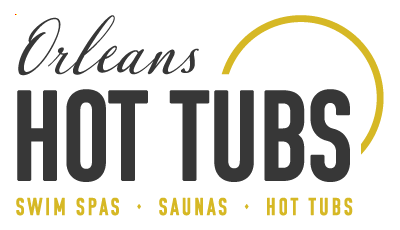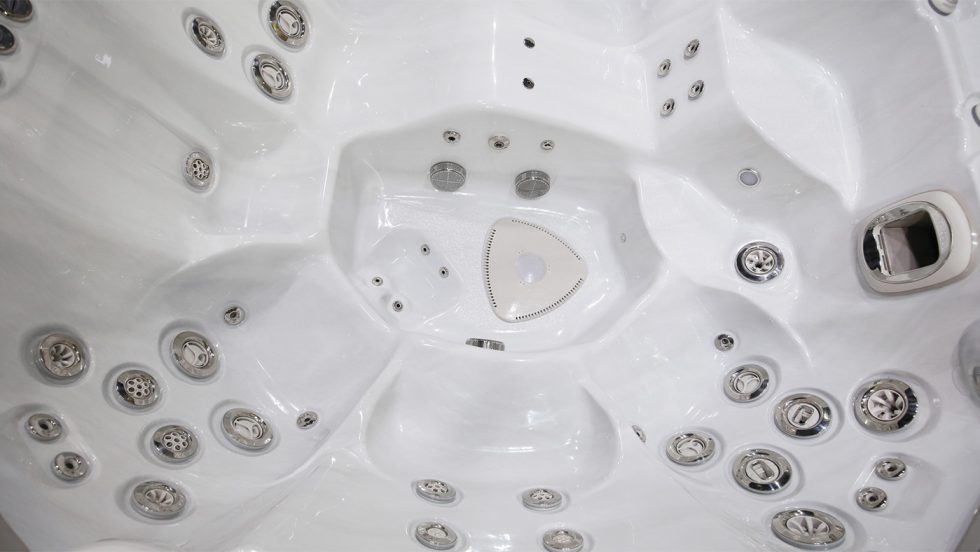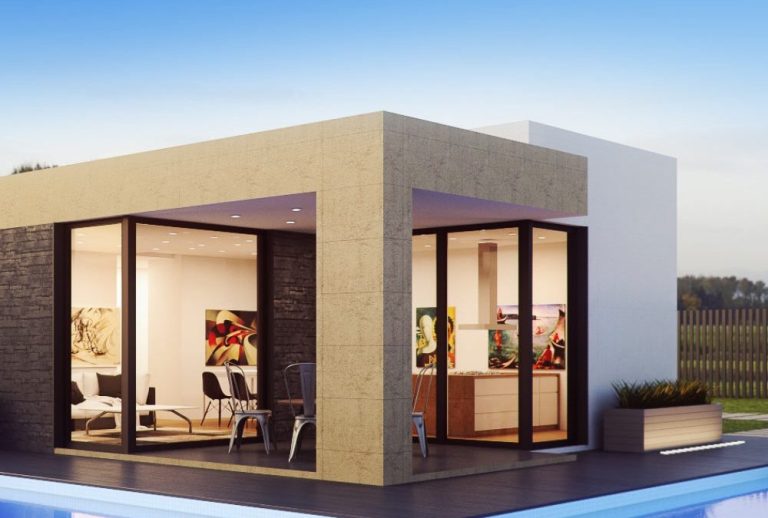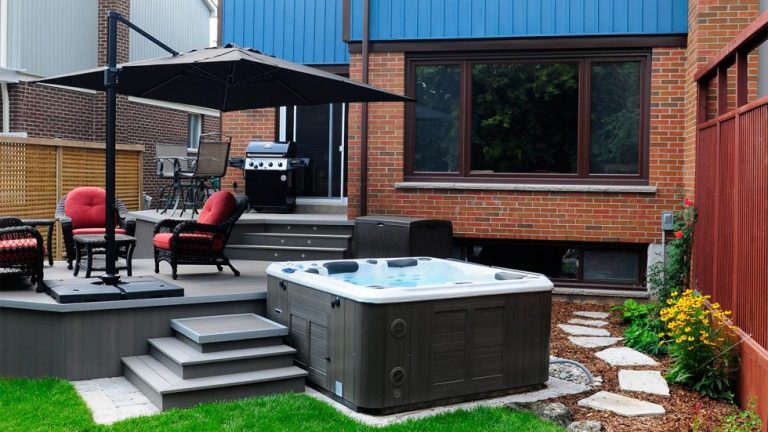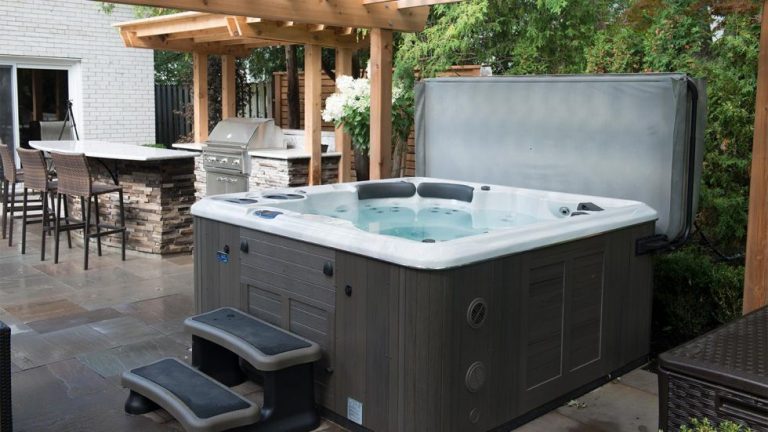When deciding between different hot tubs, many first time hot tub buyers tend to focus in on simple statistics like the size of the pumps and the number of jets when making their decision. This is only natural as these basic features are much easier to wrap your mind around when compared to things like the design of the plumbing or the efficiency of the filtration system.
This can be a mistake, however. The number of jets a hot tub has, for example, is often not the best indication of a hot tub’s massage quality. In fact, adding too many jets to a hot tub can actually worsen its overall massage quality. So how many jets should a hot tub have? Today, we will examine the impact that jet number has on the quality of your hot tub’s massage, and look at a few other factors that also affect your bathing experience.
DO MORE HOT TUB JETS LEAD TO A BETTER MASSAGE?
While a hot tub’s jets are the most critical component of its hydrotherapy experience, the number of jets is only one part of the equation. When looking at the quality of a hot tub’s massage jets there are five factors you should be considering.
- THE PLACEMENT OF THE JETS
In our opinion, the placement of the hot tub jets is more important than the number of jets. After all, if the jets aren’t hitting your muscles in the right areas they’re really not doing you much good. How can you tell if a hot tub’s jets will hit you in the right spot? Look for a hot tub with jets that follow the natural curves of your body (wider at the shoulders, narrower down the back) rather than ones laid out in straight lines or geometric shapes like diamonds or stars. These other arrangements can look impressive, but don’t provide you with any real therapeutic benefit.
- THE SIZE OF THE JETS
Another important component of a hot tub’s hydrotherapy experience is the size of the jets. The larger the muscle group a jet is targeting, the larger it should be. Jets targeting smaller muscles like your neck, wrists, and lower legs should be smaller to ensure that they accurately target the muscle. Jets targeting larger muscles in your back should be larger to ensure that they properly stimulate the whole muscle.
- POWERFUL MASSAGE PUMPS
When it comes to hydrotherapy, it all starts with the pumps. Simply put, if the pumps aren’t strong enough, the jets won’t have enough power to provide a proper massage.
Many hot tub retailers will quote the size of their hot tub pumps in horsepower. This can be misleading, however, as horsepower is a simply measurement of how much power the pump produces, rather than how much water it moves. A more accurate measurement of the power of a water pump is actually flow rate (how much water the pump is able to move).
This is an important distinction as two pumps with identical horsepower ratings can have very different flow rates. For example, Hydropool’s 4 HP AquaFlo pumps generate a massage current of 180gpm (gallons per minute) while most other 4HP pumps can only get to around 140gpm. This can make a huge difference in the overall power and quality of the massage.
- BALANCED PLUMBING DESIGN
While often overlooked, the design of the plumbing also makes a big difference in the quality and of a hot tub’s massage; both in terms of power and balance.
Poorly designed plumbing systems cause the water to travel a greater distance than what is required. The longer the distance the water has to travel from the pumps to the jets, the less power the jets will have.
Not only does inefficient plumbing lower the power of your hot tub’s hydrotherapy system, it can also lead to varying power between jets with ones closer to the pumps having more power than ones that are further away.
When looking at hot tubs, take a moment to look inside the cabinet. If you see a ton of 90-degree elbows and needlessly long plumbing runs, you can be pretty sure that that hot tub will not provide a top quality hydrotherapy experience.
- THE NUMBER OF JETS
While not as important as some hot tub salespeople will lead you to believe, the number of hot tub jets is still an important factor in the overall massage experience that a hot tub can provide. While you definitely want to make sure that your hot tub has plenty of jets, if you have too many it can actually begin to negatively affect the power of the hot tub’s massage.
How does jet number affect the power of the hot tub massage? It all comes down to the water supply. Since there is a finite amount of water coming from the jet pumps, every jet you add to the system reduces the amount of water that is available for the others. Too few jets and each jet will be uncomfortably strong, too many and there won’t be enough power to properly massage your muscles.
So what is the right number of jets then? The answer depends on the number of massage pumps the hot tub has. Generally speaking, you want there to be around 20-30 jets for every massage pump.
Another thing to consider is the number of jets each seat in the hot tub has. A 2-3 person hot tub with 30 jets, for example, can outperform a larger 8 person hot tub with 45-50 simply because there are more jets in each seat.
SO HOW MANY JETS SHOULD A HOT TUB HAVE?
As you can see by now, more jets does not always mean a better massage. There is also no “ideal” number of jets that a hot tub should have. What’s more important is the number of “jets per seat” and the number of “jets per pump” that the hot tub has. Look for hot tubs that have 20-30 jets for every massage pump and at least 5-6 jets per seat on average.
Along with the number of jets; jet size, placement, the power and number of hot tub pumps and the design of the plumbing are also crucial components of any hot tub hydrotherapy system and should be considered just as much as the number of jets the hot tub has.
